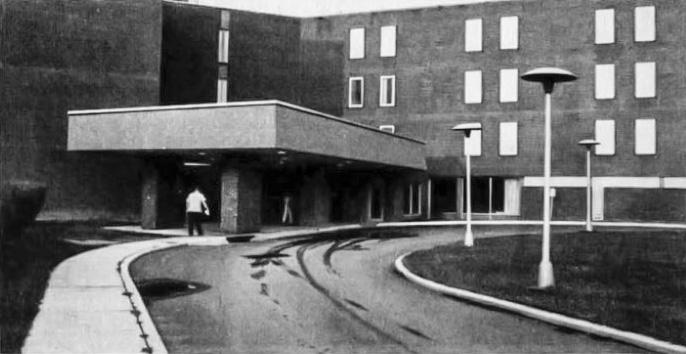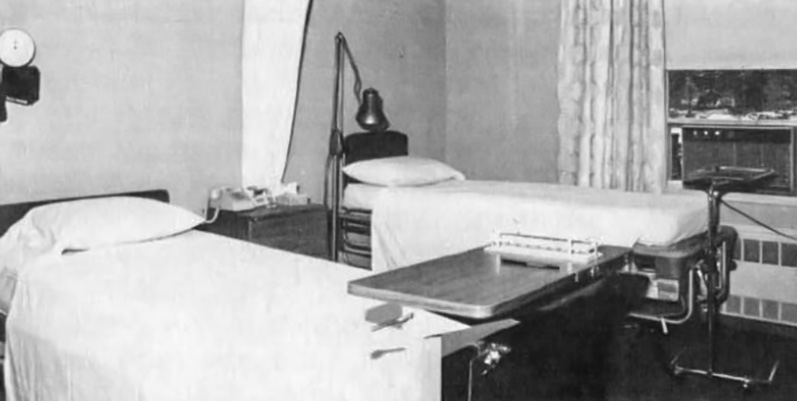Editor’s note: This is a first-person reflection essay that was written while researching for the Frederick National Laboratory history project and Poster history series.
The National Cancer Institute is currently supporting more than 6,700 clinical trials.
That staggering statistic is dwarfed by the number of participants in those trials, many of whom are cancer patients. Even more astounding is that these numbers are for just this moment in time. The thousands of trials currently recruiting or underway are themselves a mere fraction of the studies NCI has conducted or supported since its creation in 1937.
The current participants are a fraction of the people who have historically volunteered to advance biomedical research, many of whom did so with no guarantee that the method or treatment being studied would help them.
Those of us in the biomedical sector are often confronted with jaw-dropping sums: there were an estimated 1.8 million new cancer cases and 600,000 cancer-related deaths in the U.S. in 2020. We also see impassive data from clinical trials (“32% of cancers demonstrated a partial response”). In the face of familiarity and data overload, the mind may gloss over the reality that clinical science is, at its core, a very human thing and that each pip in these quantities is a person.
As our editorial team tries to tell our facility’s history and highlight its present-day achievements, we often focus on familiar characters: scientists, colleagues, and programs who conduct or support leading-edge research. We usually don’t tell the individual stories of trial participants who step up to advance research in their own way.
A Face from the Past
While researching for the Frederick National Laboratory history project, I encountered one such person. Ira Eaton Jr. was one of the first four participants in the first trial at the Biological Response Modifiers Program (BRMP), a clinical effort that opened in Frederick in 1981.
In fact, the BRMP was NCI-Frederick Cancer Research Facility’s (a name held by our facility before it became a national laboratory) first major foray into clinical studies, a highly anticipated partnership with NCI and Frederick Memorial Hospital (now called Frederick Health Hospital) that aimed to test immune system products like interferons and antibodies in cancer treatment. It was leading-edge at the time.
Eaton, a 55-year-old resident of Frederick County, was battling colon cancer in 1981. He had multiple surgeries and had undergone radiation and chemotherapy, yet his cancer kept coming back. The options seemed to be running out. However, as he and his wife, Jeanette, told the Washington Post that spring (where I first found their story), the BRMP gave them hope.
Through the program, Eaton was going to receive leukocyte A interferon (now known as interferon alpha), a naturally occurring protein that had become possible to manufacture on a large scale thanks to advances in recombinant DNA (gene-editing) technology. There was considerable interest in interferons, and early data suggested that they might have an effect against cancer. Today, interferon alpha is used to treat some cancers and blood disorders.
As a participant in a Phase I trial, Eaton was volunteering to help scientists determine a safe dose for interferon alpha. He would be an inpatient at Frederick Memorial Hospital for 28 days while he was treated. Then he would become an outpatient, still receiving interferon but in combination with another biological or chemotherapy.
The doctors and scientists conducting the trial appeared eager for the opportunity but were cautious in predicting positive results, despite the public’s enthusiasm.
A Pit in the Stomach
As I read through the Washington Post story, Eaton and his wife came alive. The pair seemed devoted to each other. They liked the color green, which featured heavily and prominently in their living room. Eaton was a blue-collar industrial employee who had worked at the same place for decades. In several ways, he reminded me of my own grandfather.
The article doesn’t mention what happened to Eaton (unsurprising, considering it was published during the trial’s early days). I jotted down some notes, moved the story to my file, and carried on with my research, thinking warmly of him and the other figures mentioned in the document.
I later found the trial’s results, which were reported at the April 1982 American Society for Clinical Oncology meeting. The 81 participants experienced no severe or life-threatening side effects. Nine even benefited slightly, their tumors shrinking—not an outcome that scientists study in Phase I trials but encouraging nevertheless. The results listed the susceptible tumor types. Colon cancer wasn’t among them.
A pit grew in my stomach as the realization of that last point set in. I felt a sudden urgency to find out what happened to Eaton.
A search for obituaries uncovered two of his siblings who passed away after 2000. I learned that he predeceased both of them, but I couldn’t find his obituary.
The sense of urgency intensified. I hoped, after his time with the BRMP, Eaton was able to join another trial and receive an effective treatment. Perhaps he and Jeanette were able to grow old together and sit in their green living room and reminisce, laughing so hard at funny memories that they cried—as my grandparents do.
I checked the index of the state death records for the early 1980s, and my search ended.
Ira Eaton Jr. died on March 28, 1982. He passed before the results of the trial in which he participated had been presented.
It’s strange to feel a profound sense of loss for someone I’ve never met—a person who died before I was born.
A Unique Spark
In our editorial team’s historical articles, the absence of individual participants’ stories tends to be a matter of necessity. Records of their experiences aren’t widely available, and time constrains us to focus on large themes as much as possible. In our stories on modern research, it’s often a matter of ethics. Our team doesn’t (and shouldn’t) have access to participants’ private data, so opportunities to identify and connect with them are few and far between.
But the patients who participate in trials—NCI, NIAID, and others—are an ember in the soul of clinical research. Like Eaton, they enter the unknown in the hopes that an experimental treatment may help them or, barring that, someone in their position in the future.
Today, we acknowledge them.
Each digit in a statistic of a patient cohort represents a unique spark on this planet. Though most of us don’t hear their stories, they have names, ambitions, and hope. They have tremendous courage. And some have green living rooms.
We are indebted to them all.



